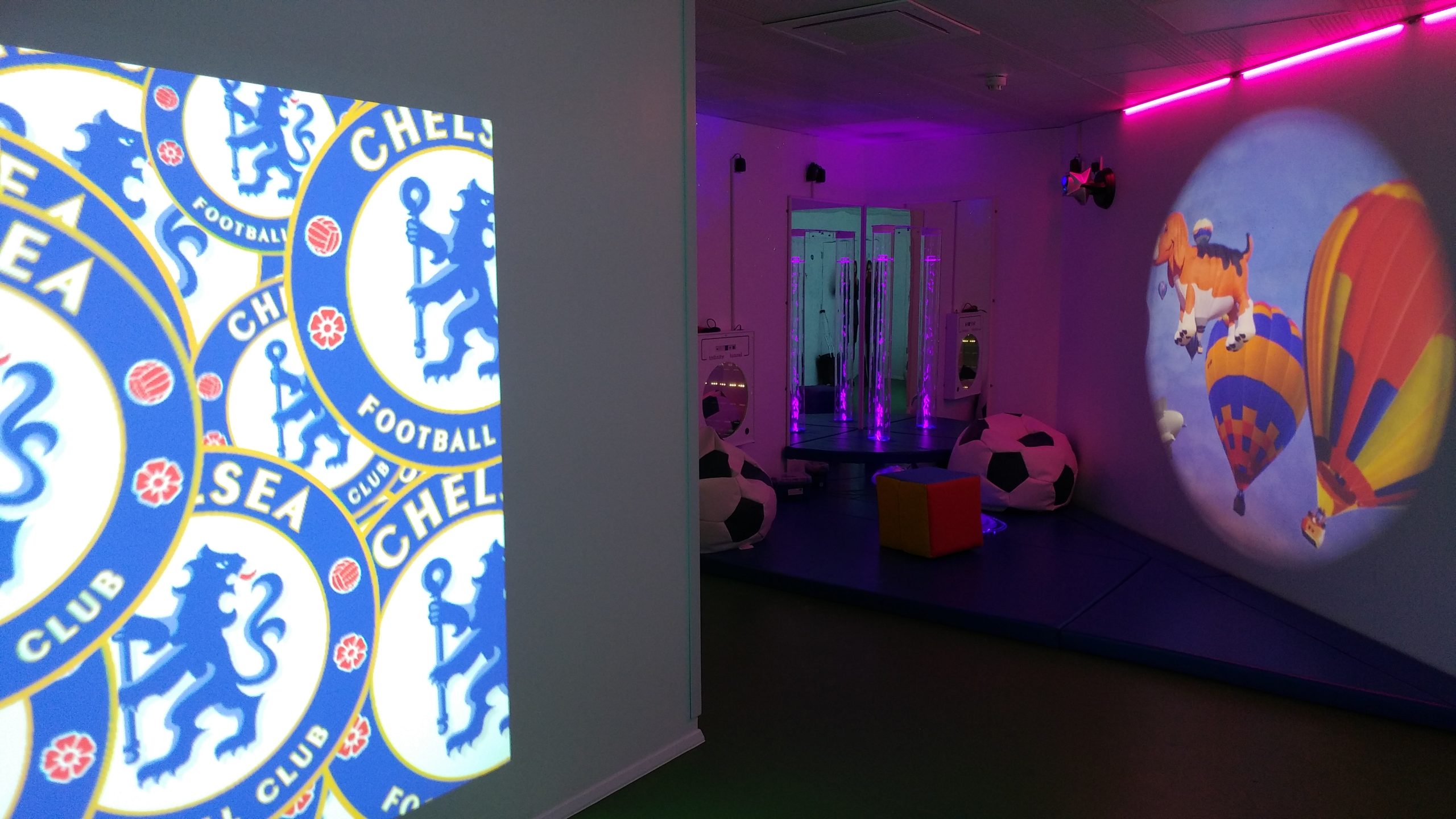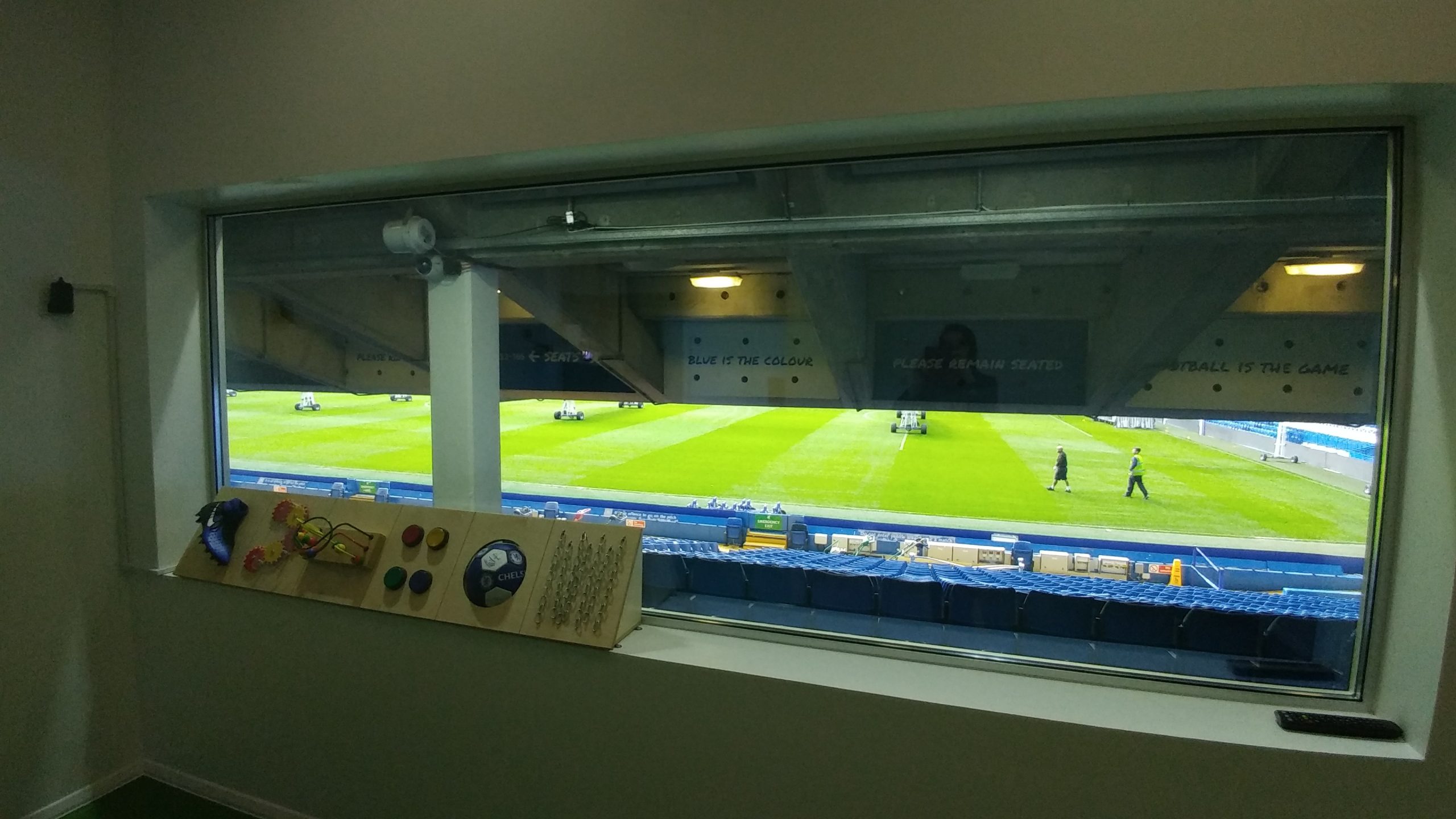At Stamford Bridge, an innovative initiative has been quietly transforming how children with special educational needs and disabilities experience the excitement of live football.

When Chelsea FC decided to create a sensory room in 2018, they faced the challenge of incorporating modern accessibility features into their historic stadium. The solution came from repurposing the former players’ crèche into a dedicated sensory-friendly space.
“With Stamford Bridge being an old stadium there were limited options as to where and how this could work effectively,” explains Nico Manduzio, Inclusion & Disability Project Officer for the Chelsea. “It was decided that the old crèche for players’ children during games would be adapted to suit the needs of a sensory room.”
After initial trial events at the end of the 2018/19 season and navigating Covid-related disruptions, the sensory room has been fully operational since the 2022/23 season, welcoming “over 200 families on matchdays since its creation.”
The space provides children who have autism or other disabilities a safe environment to watch Chelsea matches with appropriate support from staff and parents.
The sensory room is just one aspect of Chelsea’s disability inclusion work. Manduzio and his team run a variety of programmes including “pan-disability sessions and tournaments, disability-specific programmes, multiple inclusive sessions of varying natures.” For the past two years, they have also “provided coaching in a specialist school near to Stamford Bridge.”

For Manduzio, this work represents a deeply personal mission that began far from West London.
“My passion to help children and adults with disabilities and underrepresented communities started my experience by leading on community development sport projects across the African continent, specifically in Uganda, Namibia and South Africa,” he shares.
These formative experiences shaped his approach to inclusion work at Chelsea: “Those amazing experiences combined with life-changing success stories for all involved participants and later on semi-professional football players, led me to start a new journey in the UK, using the power of sports to empower, motivate and support people from underrepresented groups.”
Families interested in accessing the sensory room or other disability programmes can contact foundation.enquiries@chelseafc.com to connect with the relevant personnel.
“The easier way is to contact me directly via email as I am managing the allocations for the games,” Manduzio adds, emphasizing the direct, personal approach that characterizes Chelsea’s SEND initiatives.
Through these efforts, Stamford Bridge is becoming a more accessible venue where the thrill of matchday can be enjoyed by supporters of all abilities—proving that football truly can be a game for everyone.
The sensory room was produced and installed by Rhino Sensory.
Rhino Sensory is the UK’s largest sensory room installer, renowned for creating interactive, therapeutic environments tailored to support individuals with sensory needs. With over 20 years of experience and innovation, Rhino Sensory designs and installs high-quality, customizable sensory spaces for students and users of all ages. Spaces include, multi-sensory rooms, calm rooms, soft playrooms, sensory integration rooms, and fully immersive environments.
For more details on their work please contact:
sales@rhinouk.com
Austen Wells
Commercial Director
Rhino UK
Tel: 01270 766660
www.rhinouk.com
